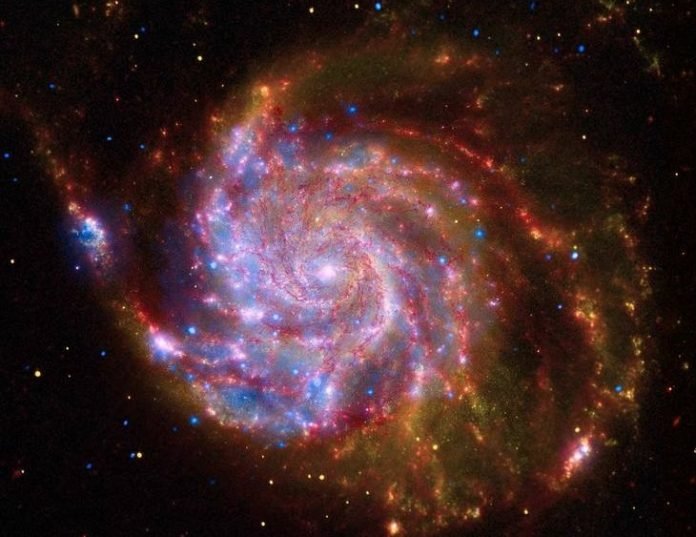
In a new study, researchers discovered why matter dominates the universe.
They confirmed that matter and antimatter decay differently for elementary particles containing charmed quarks.
The study was conducted by scientists in the College of Arts and Sciences at Syracuse University.
The team in the study measured for the first time a difference in the way D0 mesons and anti-D0 mesons transform into more stable byproducts.
Their measurement has 99.999% certainty.
It is known that every particle of matter has a corresponding antiparticle, identical in every way, but with an opposite charge.
When matter and antimatter particles come into contact, they annihilate each other in a burst of energy—similar to what happened in the Big Bang, some 14 billion years ago.
Previous studies have found that mesons are subatomic particles composed of one quark and one antiquark, bound together by strong interactions.
But they could not measure matter-antimatter asymmetry successfully.
In the current study, the researchers looked for subtle differences in matter and antimatter to understand why matter is so prevalent.
They created antimatter by smashing protons together in the Large Hadron Collider (LHC).
LHC is the world’s largest and most powerful particular accelerator. It consists of a 27-kilometer ring of superconducting magnets with a number of accelerating structures to boost the energy of the particles along the way.
The more energy the LHC produces, the more massive are the particles—and antiparticles—formed during a collision.
The data from these collisions made the scientists enable to map the decay and transformation of unstable particles into more stable byproducts.
Quarks are elementary particles that are the building blocks of matter.
There are six types of quarks, but scientists usually talk about them in pairs: up/down, charm/strange and top/bottom. Each pair has a corresponding mass and fractional electronic charge.
Recent studies have found two versions of the same particle.
One version contained a charmed quark and an antimatter version of an up quark, called the anti-up quark. The other version had an anti-charm quark and an up quark.
Using LHC data, the team found both versions of the particle, well into the tens of millions, and counted the number of times each particle decayed into new byproducts.
They found the ratio of the two possible outcomes differed by about a tenth of a percent. This suggests that charmed matter and antimatter particles are not totally interchangeable.
Although previous studies of particles with strange quarks and bottom quarks have shown differences, this is the first time anyone has witnessed particles with charmed quarks being asymmetrical.
The findings may support new physics beyond the Standard Model. The Standard Model describes how fundamental particles interact with one another.
One author of the study is Distinguished Professor Sheldon Stone, a Fellow of the American Physical Society.
Copyright © 2019 Knowridge Science Report. All rights reserved.



